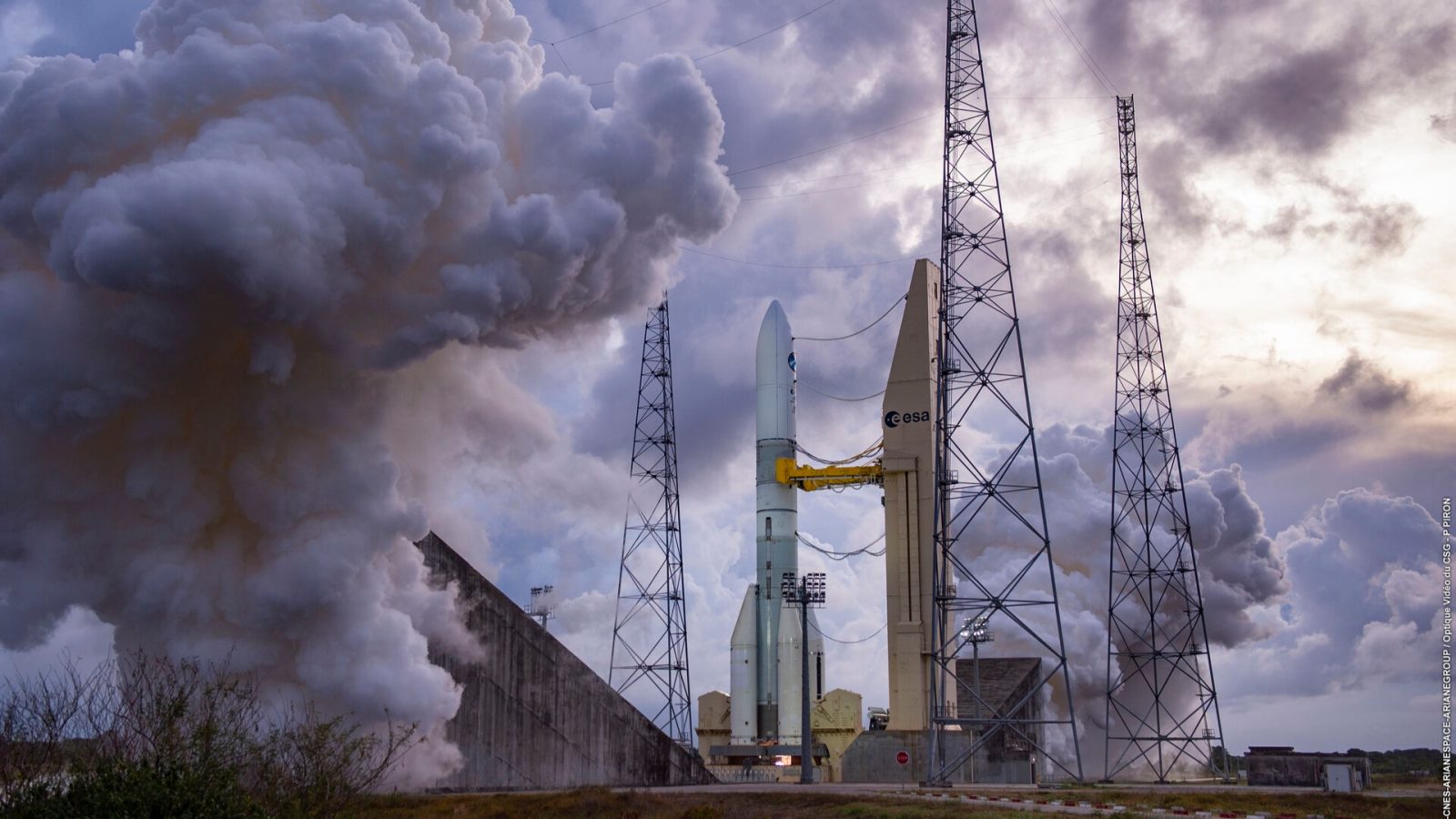
On Thanksgiving day here in the US, ESA conducted a simulated launch static fire of the Ariane 6 first stage booster. Powered by a single Vulcain 2.1 engine, the stage burned through almost 150 tons of fuel over a seven minute burn.
ESA’s milestone test ahead of launch
This week ESA and its partners conducted a seven minute long static fire of its new Vulcain 2.1 engine which will power the Ariane 6 rocket. This test was deemed successful after the engine burned through almost 150 tons of propellent on Thanksgiving day.
While before the test, ESA stated the burn was to be almost eight minutes, now the agency is stating that seven minutes was expected.
The test took place down in French Guiana where the French space agency, CNES, operates the Guiana Space Centre. Outside of a few launches of Soyuz rockets from Russian cosmodromes, this is where Europe has operated its space launch systems for decades.
The Ariane 6 test article has been fitted with the new engine for months as it has completed various test over the year to qualify it for flight. All of them were leading up to this full duration test to show that the engine is ready for launch.
The test feature a simulated first stage flight without of course any stage separation or booster ignition as the rocket would stay firmly fixed to the ground. The second stage was fueled however for structural stability. This is common in many rockets, requiring both stages to have some sort of fuel or pressurization to be structurally sound.
During last years Artemis 1 launch, the SLS rocket fueling had several parameters to meet for when the upper stage and even the Core Stage’s liquid oxygen or hydrogen tanks could be fueled to certain limits.
Join our Discord Server: Join the community with forums and chatrooms about space!
More tests to come
ESA is hoping to launch its Ariane 6 rocket sometime in 2024 but was waiting on finishing this test before sharing any detailed timeline. Hopefully that will come soon.
However, this test will not be the last one before launching. There is still a static fire planned for Ariane 6’s upper stage engine back in Germany to qualify that for flight as well.
Finally, the actual flight hardware for Ariane 6 will also need to be finished back at Arianespace’s production centers across Europe. All of these parts will then need to travel to South America for final assembly and test before launching.
Europe’s launch market has been in a self-proclaimed “crisis” as it has practically lost its access to space due to failures, delays, and political changes.
The Vega C rocket has just returned to flying with a launch in October and is ramping up but slowly. The Ariane 5 launched its final mission in July without a successor ready to take its place (Ariane 6). Lastly, ESA lost access to the Soyuz rocket in the aftermath of Russia’s invasion of Ukraine in 2022.
With Vega C and hopefully Ariane 6’s flight right around the corner, Europe’s launch crisis might finally come to an end. However, none of these options have yet to prove viable contenders to SpaceX, which has lapped up launch contracts from numerous European customers.
While Europe’s commercial launch market is showing signs of life, they are still far away from getting anywhere close to competing with SpaceX on medium to heavy lift options.
FTC: We use income earning auto affiliate links. More.




Comments